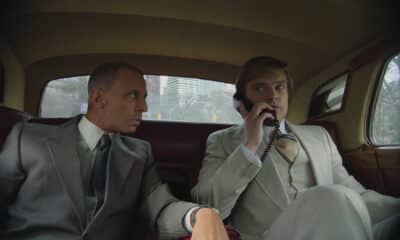
Five tones. That’s all it took for John Williams to convey a sense of a wider form of communication that stretches from the Earth to the Cosmos. Close Encounters of the Third Kind is a film about (among many things) communication and the power of the universal language of music in particular. It is fitting, then, that the Royal Albert Hall would make room for Steven Spielberg’s 1977 Sci-Fi classic in its season of live orchestral performances this year. Not only is it a wonderful chance to revisit one of Spielberg’s finest, but it offers a means to greater appreciate just how emotionally complex William’s work is in this tale of making connection with beings not of this world.
Seeing a film with a live orchestra is an experience that everyone should embark upon, be it your first time seeing the film for your 100th. It is a uniquely immersive experience, bringing you into the film in a way that no other screening format can quite muster. Music, and particularly the music of John Williams, is often used to heighten emotion and elevate scenes to their peak resonance, and the tangibility of seeing an orchestra play the score as the film progresses brings you even closer to those emotions in a truly profound fashion.

The score of Close Encounters is one such score with a huge amount of emotion. It can modulate from mystery to horror to fascination and sentimentality with a skilled cohesion, allowing for pivotal moments to truly astound, horrify and mystify. The eerie discordance of the choral elements mixed with big brassy notes connoting a glorious yet curious sense of discovery, make this not just a great Sci-Fi score but also a great horror score, with the battle between the manic strings and brass in the iconic scene of the young Barry’s abduction matching the struggle and panic of a mother who is fighting to hold on to her son in the face of a particularly intense close encounter.
The film and the score all build-up to one of the finest finales put to screen with the eventual meeting between our characters and the aliens who have been telegraphing their arrival. The moments of witty government conspiracy and deeply touching and devastating family drama give way to the meeting of human and alien, as the human race communicates to the huge, foreboding and colourful mothership through the medium of music. It is a sequence that never loses its grandeur on repeat viewing, a moment in which the music engages with a sense of discovery and playfulness with those five tones bouncing around the orchestra with a sense of glee and eagerness to learn and connect. Seeing this scene play out amongst the orchestra, leading to the triumphant suite of themes across the stargazing end credits confirms the magic of not just the film but of the orchestral experience itself. Simply put, it is out of this world.

Latest Posts
-


Film News
/ 16 hours agoCharlize Theron has also joined Christopher Nolan’s next film
In addition to the recently added Robert Pattinson, Charlize Theron has also reportedly joined...
By Paul Heath -


Film News
/ 16 hours agoA sequel to ‘Slumdog Millionaire’ is reportedly on the way
Variety is reporting that a sequel to Slumbdog Millionaire is in the works after...
By Paul Heath -


Film News
/ 16 hours agoClint Eastwood’s ‘Juror #2’ to get premium home release on 2nd December
Warner Brothers Home Entertainment has dropped us a line to inform us that Clint...
By Paul Heath -


Film News
/ 16 hours ago‘The Apprentice’ sets home premiere debut
The Apprentice has set a UK home premiere following a successful run in cinemas...
By Paul Heath













